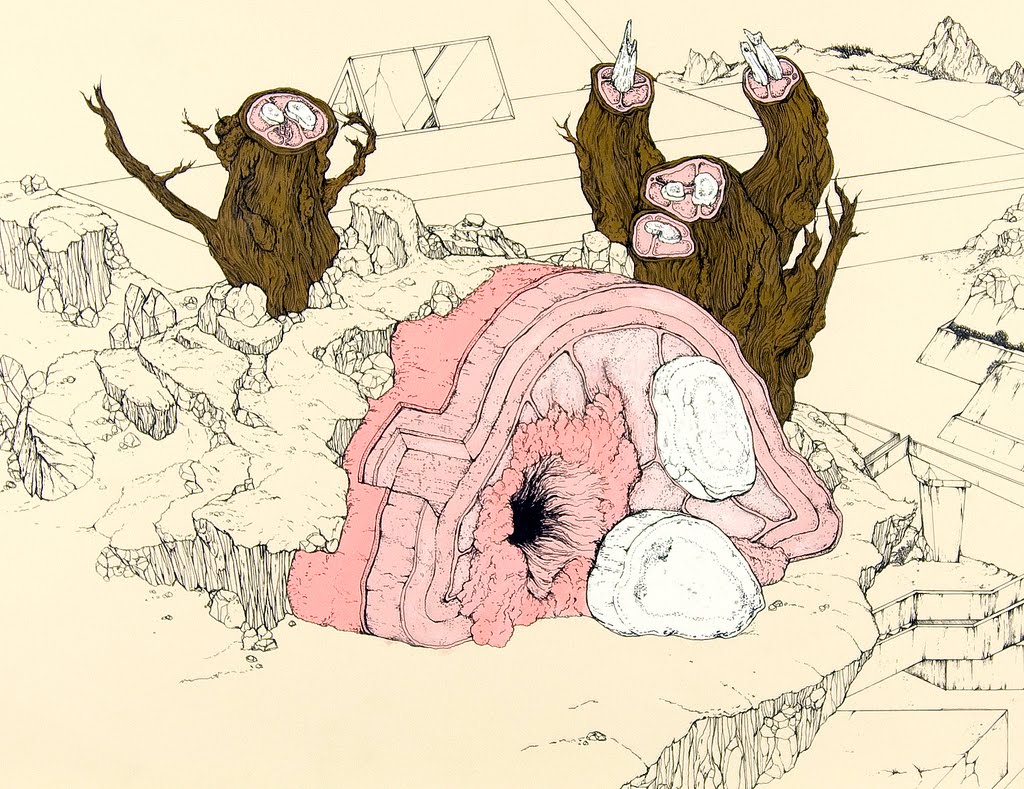Jobby



These are some of the frames from my sequence. No particular narrative was accomplished, arguably I could say the process of this trial was a narrative, but that was not really my intention. Having given a genuine attempt to create and complete an animated sequence in order to try and discover a narrative was challenging, worrying but rewarding. Should have started earlier. It was interesting to see inanimate things develop a character just because its moving or changing.
Posted by
Labels:
more


As far as narrative goes, I don't know what or how to make one however in some sense, when something follows a pattern it does achieve one through it's method.
I like the idea I encountered of the connections and similarities between natural-synthetic, in an earlier brief. I chose to illustrate the photographs. Below are my pictures derived from Bernard & Hilla's photographs. I am not entirely comfortable using their work so precisely, with more time I would very much like to do this with my own photographs. Of flumes, theme parks and hamster cages as well as genuine architectural structures.






Posted by
Labels:
Tubes and Industrial Structures

This project is an elaboration and tangent of all work and research thus far. We are asked to select a process, moment in history, a character, material and news story to formulate into a narrative sequence of images.
My chosen process is growth. Growth is a change and can be a very broad term. Its an obvious kind of process as the concept of growth is a constant in nature and history and will always manifest itself somewhere, some how. Even if it is quantitatively negative or negligibly noticeable on our human scale.
As far as materials go, Im going to focus on structures and shapes first. I was interested in the arrangement and architecture of Berlin. Like the massive building in the background here.

Firstly, it looks quite industrial. Secondly, for 'THE CHAIR: Task II' alternative uses for my chair included a dual toilet-irrigation system, hamster-tropolis and submarine.
I was reminded of these alternative uses when I found a book called 'Basic Forms of industrial Buildings', by Bernd & Hilla Becher. Here is a postcard.

These buildings demonstrate some structural similarities to amusement parks/ flumes/ theme parks and crazy hamster cages , despite having polar purposes. Its obvious that tubes are both useful and fun.




I like the buildings in Bernd & Hilla's book. I like the shapes, the angles and the fact that there is some thing amusing about them as well as the fact that they are ominous and impenetrability, like a fortress. You find yourself trying to imagine how people get inside. There is a connection between some of the tall, block-like buildings found in Eastern Europe, and that one in East Berlin that look very hard to enter and authoritative.

Speaking of tubes, I found a book called Play, in the LCC library.
Need to go back and find out who it was by. I photocopied loads of the photographs in this book, which was an arial photography book of theme-parks/ parks/ play grounds. They are extraordinary. I used the photocopies in loads of collages in my book because they were so beautiful along with some spray paint and other found images. I will use them as reference when tube drawing. I like how the literal concept of perspective is drawn in as well. As in looking from a height changes your idea on how things are constructed and used.


Posted by
Labels:
paleontology

Drawing has forever been used to inregister into perpetual memory, events, discoveries and customs or the days of yore. It serves a vital role in our culture. I have been reading Ernst Heckle's 'Artforms in Nature', which is probably one of the best books I have ever had.
I enjoy that Heckle appreciated the accidental symmetry of nature and produced stunning work from it that had an educational purpose. Regardless of it being true to the fashion of his time to be meticulous and a collector, they are still amazing.

I remember thinking, at one of the museum visits how difficult observational drawing is. I couldn't decide wether I wanted to be accurate or make a big mess. I would rather be accurate for some curious reason but you have to be so patient and you have to do exactly what you see. Its always the case that I find observation boring to do, but if Im really calm and don't think about how long its taking its 'OK'. Seldom have I done observation, only for GCSE Art and when I did a Geology course when I was (trying to) read Physics and I only passed because of my Paleontology drawings, which was good because I sucked at Geology, a lot. I was good at Paleontology BECAUSE I had spent hours drawing tiny beasts and could see through observation what we were being taught. I think thats a good concept for learning.
One day Id like to rework some of these. I didn't do them for any other reason than because it helped support a crappy essay I did. I wanted to make them exciting, and as it stands, to me, they do not possess such a quality.But I would like them to.
















Posted by
Labels:
Subscribe to:
Comments (Atom)
























